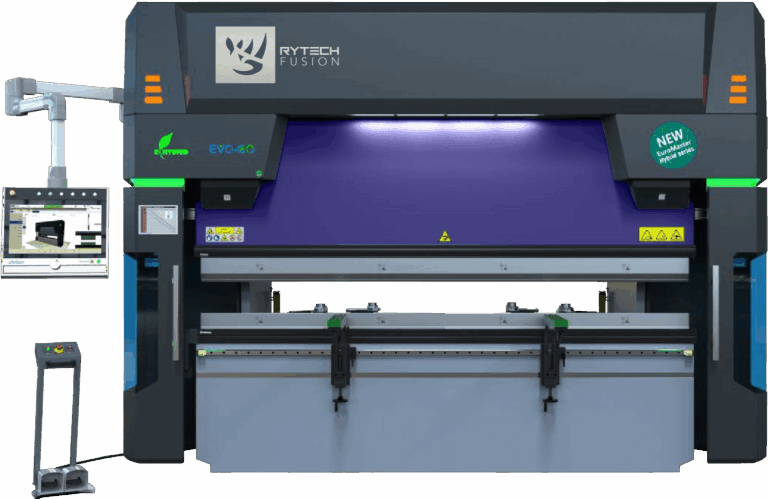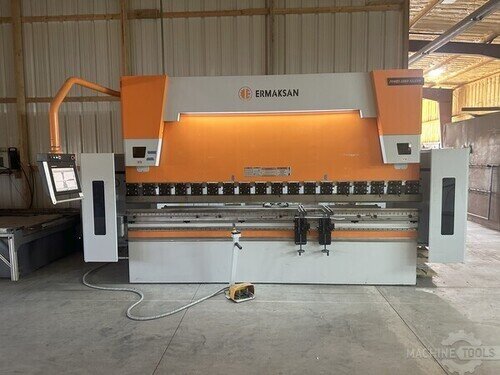I help Mac-Tech customers keep production moving by lining up the right parts, the right service, and the right timing. In the shop and on the road, I see the same question every week: should we recondition this tooling or replace it. The right call protects your operators, holds tolerance, and preserves cash flow. Here is how I guide that decision, plus the service practices that keep press brakes, hydraulic systems, and CNC controls predictable and productive.
Replace vs Recondition – a clear decision path from Nicole Salato
- Start with safety and structure: If you see cracks, mushrooming on striking surfaces, deep chips, or bent segments, stop. Replace. Reconditioning is not appropriate when a tool’s structure is compromised.
- Measure against your tolerance band: If your bend angles or part dimensions drift and you need more than normal crowning or shimming to compensate, inspect punch tips, die shoulders, straightness, and height consistency. If a known-good tool set restores accuracy, the suspect set is worn. If wear is uniform and within regrind allowance, recondition. If height or geometry can no longer be restored within the machine’s leveling and crowning range, replace.
- Check regrind history: Track how many resurfaces each tool has had and the material removed. When remaining height or geometry falls below OEM limits or it no longer matches the rest of your library, replacement avoids chronic setup time and scrap.
- Run the math: Compare cost per hit for reconditioning versus replacement. Include shipping, expected remaining life, and downtime. If a reconditioned tool will not last through your next production window, replacement is the lower risk choice.
- Consider parts availability and schedule: If new tooling has a long lead time and the tool can be safely returned to spec, recondition to bridge the gap. If turnaround is fast and your schedule is tight, replacement can prevent unplanned stops.
Store Series Automation System
ALG Series Automation System
Reconditioning That Extends Life and Holds Tolerance – wear limits, cost per hit, and scheduling
Reconditioning works best when wear is predictable and within known limits. Typical candidates include press brake punches with rounded tips, V-die shoulders that have grown a small radius, minor nicks or burrs, and shear blades with a tired edge. In each case, the goal is to restore geometry, straightness, and surface finish without pushing height or angle outside your standard tool set.
- Wear limits: Use manufacturer specs for minimum punch tip radius, die shoulder radius, segment height, and straightness. If you do not have them, document your as-new tools and use that reference. If straightness, height, or angle cannot be restored within your tolerance band, move to replacement.
- Cost per hit: Calculate total reconditioning cost plus round-trip shipping and any downtime. Divide by estimated hits remaining based on your material mix and thickness. Compare to the same calculation for new tooling. Include risk costs such as angle variability and extra inspection.
- Scheduling: Rotate tool sets so you are never waiting on the only punch or die you rely on. Ship segments in batches to avoid a full setup outage. Align reconditioning with planned maintenance windows. If your press brake runs a long job soon, recondition early so you start with a fresh edge and predictable angles.
- Press brake alignment matters: A freshly reconditioned tool still needs a healthy machine. Verify ram parallelism, crowning function, and backgauge repeatability, otherwise you will attribute machine error to tooling.
- Documentation: Track each tool’s regrind count, height after rework, and the jobs it runs. The more data you keep, the more accurate your next decision will be.
Replacement That Prevents Downtime – cracks, lost accuracy, and safety risk
Replacement is the right call when continued use risks damage, injury, or chronic inefficiency.
- Structural defects: Visible cracks, heat checking, chipped tips or shoulders that exceed regrind allowance, mushrooming, and bent segments. These can fail under load and should be removed from service immediately.
- Geometry you cannot bring back: If repeated regrinds push height and angle out of match with your standard set or require excessive shimming and crowning to hold spec, replacement saves setup time and scrap.
- Chronic accuracy loss: If bend angles drift more than your process allows and do not stabilize after machine verification, the tool has reached end of life.
- Surface and material issues: Severe galling that imprints material or corrosion that pits the working edge can make parts unpredictable. When polishing no longer resolves it, replace.
- System ripple effects: Do not ignore machine-side signals. Hydraulic pressure drift, noisy pumps, hot oil, sticky valves, and erratic backgauge motion can cause tool and part complaints. Replace worn hydraulic components and motion parts proactively to protect both tooling and output.
Keep Uptime High – parts sourcing, preventative maintenance, and service coordination with Nicole at Mac-Tech (nicole@mac-tech.com)
I combine parts sourcing, preventative maintenance, and service scheduling so you can plan work with confidence.
- Sourcing and availability: I qualify OEM and trusted aftermarket sources, verify fit and specs, and communicate realistic lead times. For common press brake wear items and hydraulic components, I push for stocked or expedited options. For long lead CNC and drive parts, I set up alternates or reman options when appropriate and provide tracking so you can plan labor and jobs.
- Preventative maintenance rhythm:
- Daily to weekly: Clean and deburr tooling, check backgauge fingers, verify safety devices, wipe down guideways.
- Monthly: Inspect hydraulic hoses and fittings for weepage, check oil level and temperature, clean filters and cabinet fans, verify ram parallelism and backgauge repeatability with a simple gauge block check.
- Quarterly to semiannual: Replace or test hydraulic filters, sample oil, check pump case drain flow, calibrate the backgauge, verify CNC parameter backups and replace control batteries, tighten electrical terminations, inspect encoder cables and proximity sensors.
- Annual: Full hydraulic service if indicated by oil analysis, deep inspection of cylinders and seals, crowning system inspection, ball screw and linear guide checks, and a complete safety function test.
- Spares strategy: Keep critical spares on site for high-risk, high-impact components such as hydraulic filters and seals, pressure switches, proximity switches, foot pedal assemblies, safety relays, control batteries, fuses, and a known-good punch and die set that can run your most common job.
- Service coordination: Email me at nicole@mac-tech.com with your machine model, serial number, fault messages, photos of the issue, and schedule constraints. I will align parts, technicians, and shipping so your downtime is measured in hours, not days. If you need a bridging tool set while yours is being reconditioned, I will help you plan that too.
FAQ
How fast can you source common press brake tooling and service parts
- Most standard punches, dies, filters, switches, and sensors ship same day to 3 business days. Specialty geometries and CNC or drive components can run 1 to 3 weeks. I will confirm stock and provide an expedite option when possible.
What are the early signs my machine needs service rather than just a setup tweak
- Angle corrections growing larger through a shift, inconsistent backgauge repeats, oil running hotter than usual, hydraulic pressure drifting, new noises from the pump or valves, or control alarms that clear and return. Address these early to prevent secondary damage.
How do I decide to recondition or replace a punch or die
- Inspect for cracks and chips first. If safe, measure height, straightness, and tip or shoulder condition. If those can be restored within your tolerance and regrind allowance, recondition. If not, or if regrinding would leave the tool unmatched to your library, replace. I can help you run the cost per hit comparison and scheduling plan.
What preventative maintenance schedule do you recommend for a busy press brake
- Weekly cleaning and checks, monthly verification of parallelism and backgauge repeatability, quarterly filter and oil assessments with calibration, and annual hydraulic and safety inspections. Add control backups and battery replacements on a fixed annual date.
What is Mac-Tech’s response time and ordering process
- Email me the machine ID, the parts list or symptoms, and your deadline. I usually confirm parts and an action plan same day. For emergencies, I prioritize shipment and arrange a technician visit or remote support within your production window.
- Can you coordinate reconditioning while keeping my line running
- Yes. We schedule staggered shipments of tool segments, secure a temporary tool set if needed, and align the work with your maintenance window so production continues.
Closing message from Nicole:
If you want a clear call on recondition versus replace, or you need faster parts and service coordination, I am here to help. My goal is simple: keep your press brakes, hydraulics, and controls producing good parts with minimal downtime. Email me at nicole@mac-tech.com and we will map out a plan that fits your schedule and your tolerance band.
Get Weekly Mac-Tech News & Updates






